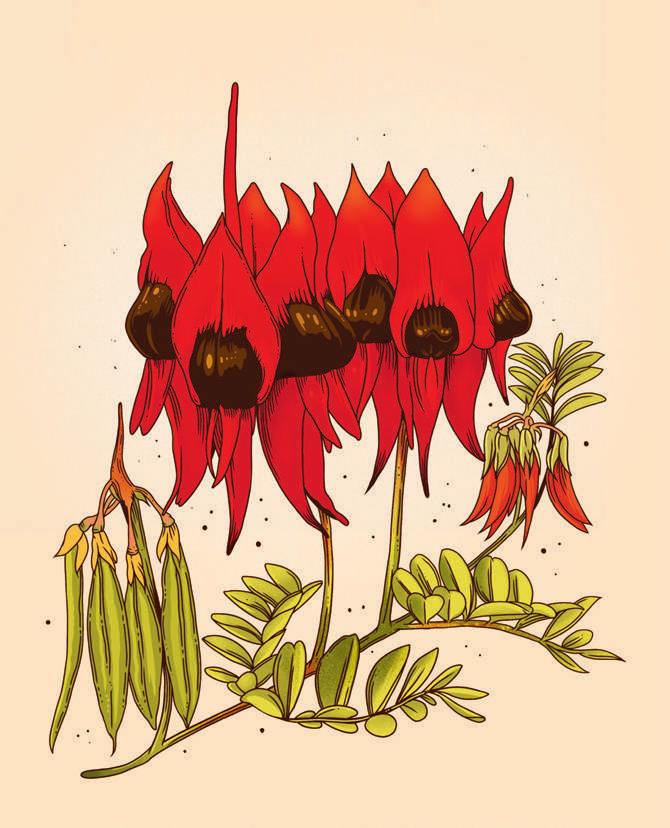
1 minute read
Scarlet Runner
~ Kennedia prostrata ~
Nall in the Gunditjmara language
Advertisement
FABACEAE
With the Scarlet Runner’s sprawling ground-dwelling nature, one might assume the sandy soil has sprouted thirsty red tongues and is presenting them to the sky. It’s strikingly reminiscent of its cousin, Desert Pea, with its elongated scarlet pea-flowers, and will similarly attract nectar-hungry birds. It makes for a sprawling ground-swelling garden companion with edible and cultural value for First Nations People.
WHERE TO LOOK
The Scarlet Runner can be found along the south coastline of the mainland, from Western Australia through South Australia, Victoria and New South Wales as well as lutruwita (Tasmania). It enjoys sandy soils and can often be seen sprawled out along sand dunes.
Locations → Victoria: Warrandyte State Park, Anglesea Heath and Gariwerd (Grampians) National Park; SA: Bullock Hill Conservation Park, Mount Magnificent Conservation Park, Onkaparinga River National Park and Mount Panorama Native Forest Reserve; WA: Stirling Range National Park.
FEATURES
This ground-covering plant can stretch out its woody limbs to a length of 2.5m. Its silvery-green 5–30mm leaflets feature silky hairs and undulating margins. The scarlet-red pea-shaped flowers measure 15–20mm and feature a yellowy-green ‘eye’ at the base of their broad egg-shaped petal. They sit solo or in groups of four on long stalks. Five to eight dark brown seeds are formed within hairy cylindrical pods measuring 3–5cm long.
FLOWERING SEASON
Winter and spring → These perennial peas are prominent from July to November but can be seen as early as April.
TRADITIONAL USES
The long trailing woody stems have been used as a form of twine and the nectar-rich pea-flowers as a source of honey. The leaves also make a tea-like brew with a flavour similar to liquorice.
PLANTING
As with most of the pea family, seeds need a pre-treatment of boiling water with an overnight soaking to remove their hard coating. The seeds that double in size are ready to be sown, germinating in 12 to 30 days. The plant enjoys part shade or full sun in well-drained sandy soils with a bit more moisture. Under prolonged dry spells, the Scarlet Runner can die back to underground and will reappear with a bit more water. Propagate by using firm new growth. Seeds are available online and plants in specialty nurseries.










